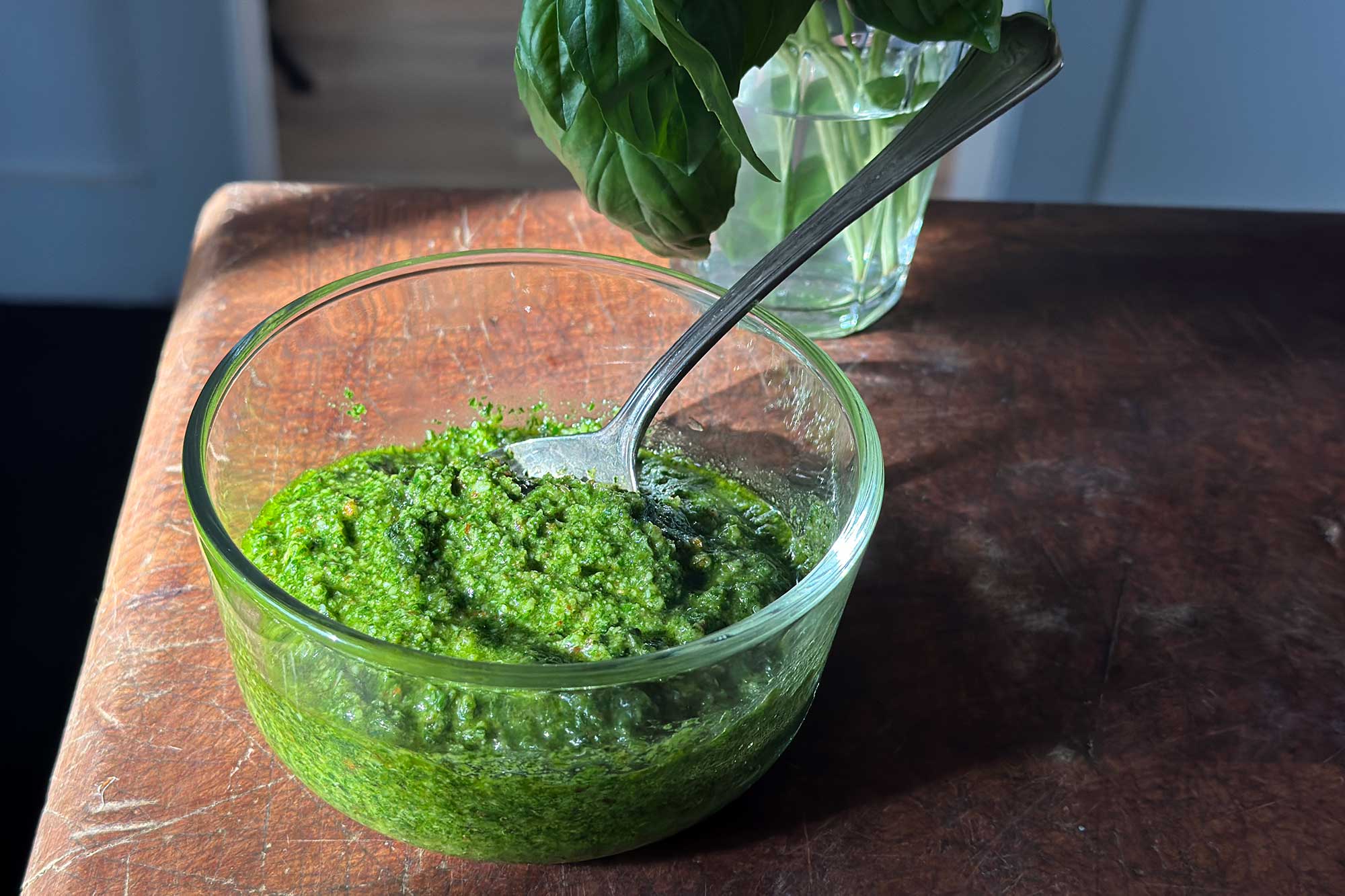Liguria is famous for its basil, and it’s not just the region’s terroir and proximity to the sea breezes of the Italian Riviera that justify this fame. It’s also the strict attention to detail when growing it. The best, DOP-certified Ligurian basil is grown for only about 28 days and picked when still young and tender, making it ideal for pounding into bright green pesto alla Genovese. Buying basil in Liguria is like buying bundles of delicate plant starts—far different from the lush bunches of large mature leaves we buy here in the States. That’s why I recommend taking the extra step of briefly blanching basil for pesto. It helps tenderize the leaves and sets their bright color, allowing them to be pureed without bruising and turning a murky shade of brown. After all, the vibrant green color is so much a part of the pesto experience.
I often make big batches of pesto each summer and freeze it for use all year long. There’s nothing nicer than knowing you have a stash of it just waiting to garnish a soup, coat a bowlful of gnocchi, or top a pizza. When making pesto to freeze, I omit the garlic and Parmesan, and instead wait to add them to the defrosted pesto before using. Garlic tends to taste oddly strong when frozen, and freezing cheese turns it rubbery.
Basil Pesto
Yield: about 1 cup
Ingredients:
- Sea salt
- 2 cups tightly packed fresh basil leaves
- ⅓ cup pine nuts, lightly toasted and cooled
- 2 garlic cloves, finely chopped
- ½ to ¾ cup extra-virgin olive oil, or more as needed
- 1 cup finely grated Parmigiano-Reggiano, or plant-based alternative
- Freshly ground black pepper
Procedure:
- Bring a large pot of water to a boil over high heat. Add a generous pinch of salt. Set a large bowl of ice water nearby.
- Drop the basil leaves into the boiling water, stir, then remove the leaves with a spider or slotted spoon and plunge immediately into the ice water. Keep them submerged by pressing down with the spider. Remove the basil from the ice water, leaving behind any ice, and squeeze dry.
- Pulse the pine nuts in a food processor until finely chopped. Add the basil and garlic and pulse until combined. With the machine running, pour in ½ cup of the olive oil and process until a smooth, bright green paste forms, stopping to scrape the sides as needed. Stir in more oil if you want a looser texture.
- Transfer the pesto to a bowl, stir in the Parmesan, and season with salt and pepper.
Notes:
- If freezing the pesto, omit the garlic and Parmesan. Transfer the pesto to a sealable container, smooth the surface, and pour a layer of olive oil on top to protect the surface from air. Freeze. When ready to use, allow the pesto to defrost and then stir in the garlic, smashed into a paste, and the grated Parmesan.
Arugula Variation:
- Peppery arugula doesn’t have the same tendency to bruise, so there’s no need to blanch the leaves before using. And since arugula is its prime in late spring and early summer, this is the pesto to make when you’re waiting for basil to hit the farmers’ market.
- Follow the recipe for classic Basil Pesto, skipping the blanching step and pureeing 4 loosely packed cups of regular or baby arugula leaves instead of the basil.
Excerpted with permission from The Italian Summer Kitchen by Cathy Whims

